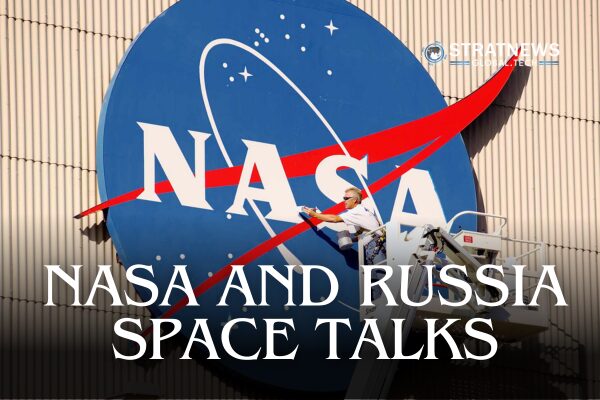NASA and Russia Leaders Meet to Discuss Space Cooperation
NASA’s temporary chief met face-to-face with the head of Russia’s space agency in Florida on Thursday, marking a rare moment of cooperation amid global tensions. The meeting took place at the Kennedy Space Center, where representatives from NASA and Russia, Sean Duffy and Roscosmos director Dmitry Bakanov talked about continued collaboration on the International Space Station (ISS) and potential joint efforts on the Moon.
This was the first direct meeting between the two agencies’ leaders since 2018. It also came shortly after Duffy was appointed acting NASA administrator earlier this month, while still serving at the US Department of Transportation.
Talks Signal Renewed Dialogue
Roscosmos shared video footage of the meeting on Telegram, showing both sides flanked by their teams. The visit also included stops at NASA’s Johnson Space Center in Houston and was timed with the planned launch of Crew-11 from Florida. However, poor weather delayed the launch until Friday morning, according to SpaceX.
Both agencies confirmed the meeting but shared limited information. Roscosmos stated that discussions focused on ISS operations, joint lunar missions, deep space exploration, and ongoing cooperation in other space areas. NASA only commented briefly, noting that the meeting centred on continued collaboration in space.
Although details on lunar and deep space plans were not disclosed, the discussions suggest a possible thaw in relations between the two space powers. The global space landscape has shifted dramatically since Russia invaded Ukraine in 2022, leading to the collapse of many joint Western-Russian projects.
War in Ukraine Reshapes Space Alliances
Before the Ukraine conflict, Russia had planned to join NASA’s Artemis Moon programme. But after the invasion, it instead aligned with China on a rival mission, the International Lunar Research Station. Since then, Russia has focused more on its military space initiatives.
Despite political tensions, NASA and Roscosmos have kept the ISS partnership alive. The station, worth an estimated $100 billion, depends on mutual technical support. American solar panels provide power, while Russian thrusters maintain the station’s altitude. This cooperation remains vital to ongoing international research involving Europe, Japan, and Canada.
Future of ISS and Astronaut Exchanges Discussed
Bakanov and Duffy reportedly also spoke about extending the astronaut seat exchange agreement. Under this deal, US astronauts fly aboard Russian Soyuz capsules, and Russian cosmonauts travel on American spacecraft. They also discussed plans for the eventual retirement of the ISS, expected around 2030.
Meanwhile, tensions continue between the military space efforts of both countries. The US has accused Russia of developing nuclear space weapons and placing surveillance satellites near American assets. Russia has denied these claims.
Still, the ongoing ISS partnership shows that even in a fractured global landscape, space exploration can remain a rare bridge of cooperation.
with inputs from Reuters


